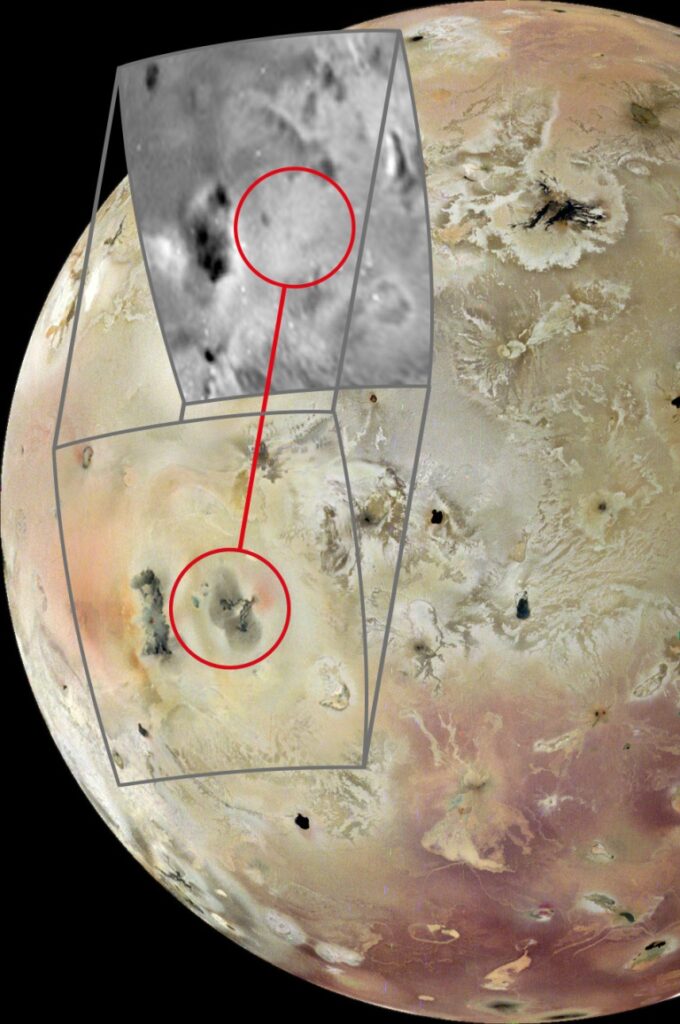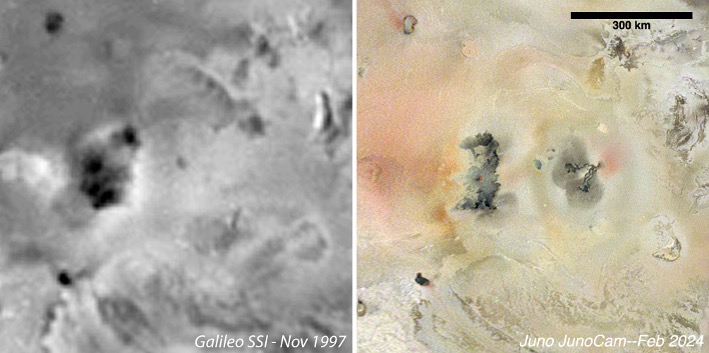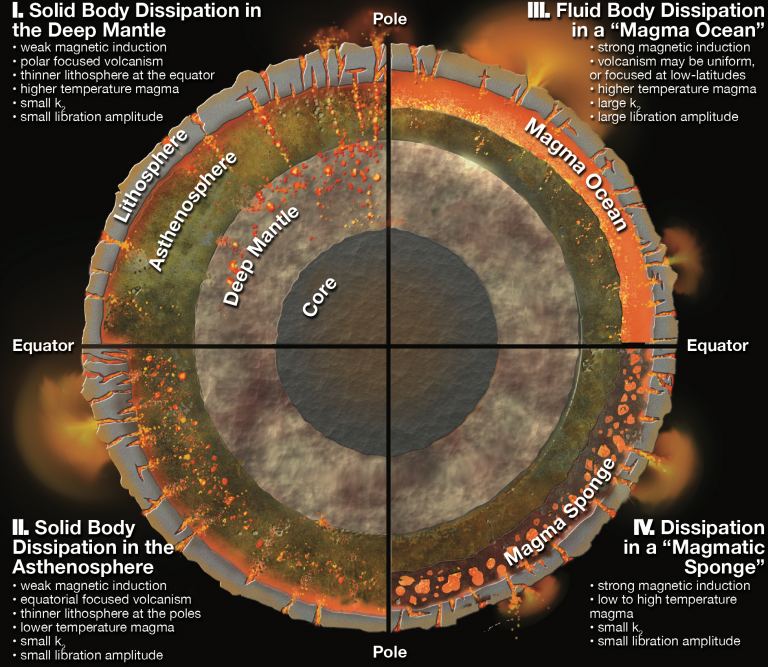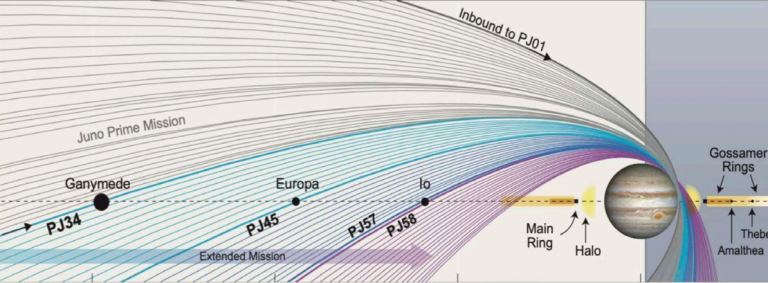Newly Discovered Massive Volcano Erupting on Jupiter’s Moon Io
The largest moon of Jupiter – Io can be described as being the most geologically active object within the Solar System.
At the current moment, the Juno NASA has given more information about Io and it has a set of images of this moon which was taken after 25 years.
Images captured from JunoCam showed a new formed volcano which has emerged after the Galileo spacecraft images of the area.
This new volcano is in the southern hemisphere near the equator of Io and it has formed at a place that experiences volcanism because of the heat of Jupiter’s tides. More than two thirds of Io’s volcanoes are situated in latitudes 30 degrees N and S of the equator.
When Galileo imaged this region in 1997 the area looked rather dull, and there were no perceivable features of the terrain.
It is located near another volcano which is called Kanehekili but lies in an active state. One of the images that were captured by JunoCam in April year 2024, reveal that extensive lava flows and volcanic deposits occupies 180km by 180km.
‘This large and complex volcanic feature visible in the latest JunoCam images looks to be a new formation since the last Juno time in 1997. ’ said Michael Ravine from Malin Space Science Systems, the builder and operator of JunoCam on NASA’s Juno mission.
However, the field of the volcano appears to have arisen abruptly and therefore, this kind of volcanic activity is attributed to the position of the moon Io.

Tidal interaction with the large Jupiter as well as tidal effect from its moon Europa is transmitted and dissipated as orbital and thermal energy on Io. Though this heat keeps up the subsurface oceans of Europa, Ganymede and Callisto in its molten state, for Io which does not have ocean, this heat manifests itself in volcanism. This results in the formation of more than 400 volcanic mouth through which the magma protrudes and expels through the surface. These eruptions shower sulfur compounds on the surface of Io and that is why the satellite has shades of nice colors.
The resolution of the best ever taken by JunoCam of the new volcano was taken on February 3, 2024, at about 2,530 km away from the new volcano. This is about 1 of resolution of the image. 7 km per pixel and the light source is sunlight which has reflected off Jupiter’s surface and lights up Io.

A great number of issues related to Io, the processes of volcanic activity on this satellite, and its internal structure remain unexplained today.
Though it is a fact that Jupiter’s tidal heating is the basic source of heat for the moon, the spread of the heat within Io is still a mystery. There is also still uncertainty of the dimensions and the characteristic of Io’s magma ocean among scientists.
More questions are the factors that cause eruptions and the processes that characterise various eruptive styles including plinian, effusive, and pyroclastic.
Similarly, the history of volcanic activity in Io and the rate of the resurfacing in the present days are unknown. There are no impact craters on Io and therefore it can be concluded that its surface is not very old.

By investigating the concept authors hope to explain how volcanic emissions affect Io and its very sparse atmosphere. It is possible that the volcanic activity on Io has changed with time and the causes of these changes are yet to be established.
Attempting to answer these questions will help not only the understanding of Io but also of other terrestrial bodies.
Although Juno has detected a new volcano on Io, its observations can only afford quite a lot towards its comprehension. Juno has more such flybys of Io planned until 2025, although one of the distant, approximately 94,0 km.

These imagines are clear representation of one of the outstanding features of Juno mission. JunoCam may not be a scientific instrument per se, but it was built as outreach tool and all JunoCam images are raw and in public domain and can be processed by anyone.
This way JunoCam has proved its scientific utility in identifying the new volcano.
This article was originally published by Universe Today. Read the original article.
Do not forget to share your opinion with us to provide you with the best posts !




0 Comments